
Sybrand van Niekerk left after his extended month on October 25, but already on October 27, I had new guests arriving. I just managed to have a small overhaul on my Landrover Lizzie that performed perfect on the long Tanzania and Kenya Safari with Sybrand(More than 6.000km). My new guests were Peter Boesman from Belgium, a bird recorder with the most species recorded in the world and Howard Laidlaw, an Englishman living in Panama. Both of them were world listers and Howard missed a few birds on 6.000 species. I believe Peter was right behind.
Day 1, Sunday, October 27 – Kilimanjaro International Airport (KIA) to Kiligolf.
Howard and Peter came on the KLM flight that arrives at around 20:30 at KIA. It is already very dark by then. I came past a very nasty accident on my way to the airport and it reminded me that I do not prefer driving in the dark here. Anyway, I arrived safe and sound at the airport and picked up my guests. We drove straight home to my place on Kiligolf picking up many Slender-tailed Nightjars on the way. Both boys were tired from a long journey, so we all retired early to bed.
Day 2, Monday, October 28, Kiligolf and Dolly estate
Since Peter was a bird recorder, he preferred to be up quite early. Often too early for a bird photographer that is depended upon light. We had decided to explore my estate this day. I have recorded more than 200 species on Kiligolf and quite a few of them are endemic to NE Africa. Abdul, my local guide for the Arusha area had joined us and while having a cup of coffee at my balcony, we started ticking off birds: Vitelline Masked Weaver, Chestnut Weaver, Chestnut Sparrow, Long-tailed Fiscal, Red-chested Cuckoo, Crested Francolin and Blue-capped Cordonbleu were some of the birds we ticked off. We decided to do a walk on the golf course on what the golfers calls the back 9. I live on the 16th hole, so we backtracked. Diederick Cuckoo, Red-billed Firefinch, White-bellied Go-away-bird, White-browed Coucal, Yellow Bishop, Yellow-collared Lovebird, Purple Grenadier Spotted Palm Thrush, African Grey Flycatcher, Orange-breasted Bushshrike, Sombre Greenbul, Red-and-Yellow Barbet, Reichenow´s Seed-eater, Southern Citril, Red-rumped Swallow, Buff-bellied Warbler, Blue-naped Mousebird, Red-cheeked Cordonbleu, Pale White-eye, Grey-headed Kingfisher, Red-faced Cisticola, Red-faced Crombec, Crimson-rumped Waxbill, Nubian Woodpecker, Gabar Goshawk, Slate-coloured Boubou, Giant Kingfisher, Alpine Swift, African Fish Eagle, Tambourine Dove, African Black Swift and Klaas´s Cuckoo, were some of the birds recorded on Kiligolf before breakfast. A total of 74 species on Kiligolf before 10:30 was no bad? Selvine made us a nice brunch, but with no time to waste we went out birding again. On my neighbouring estate Dolly, I have a spot for Grey-olive Greenbul which was a target for both Peter and Howard. We picked up the Greenbul and added European Bee-eater, Mountain Wagtail, White-rumped Swift, Magpie Shrike African Harrier-Hawk and Little Swift, before we returned to Kiligolf. We went to the Clubhouse and had a well deserved rest in the garden and a well deserved beer while still ticking birds. Around 15:00 we started walking the golf course again. This time the front 9. We saw many of the birds we had seen in the morning, but still managed to add a few: Malachite Kingfisher, Purple Heron, Pangani Longclaw, Golden-backed Weaver, Red-headed Weaver, Red-fronted Tinkerbird and African Hoopoe were some of the birds we added before we went back to my house. A total of 103 species were recorded on Kiligolf that day + a handful on neighbouring Dolly Estate. Quite a good start. Selvine prepared a nice dinner for us and we were soon heading for bed.
Some pictures from Day 2:

Howard, Peter and Abdul on Dolly Estate, watching and recording a singing Southern Citril.

A well deserved rest and beer at the Kiligolf Clubhouse during the heat of the day. Me, Peter, Howard and Abdul
Day 3, Tuesday, October 29, Kiligolf – Tarangire – Nanja – Kiligolf
We left Kiligolf around 06:00 this morning heading for Tarangire. It is around a 2 hour drive from my place. Just before we reached the gate of the park, I spotted a Rufous-tailed Weaver. I stopped the car and we found a lot of bird activity at the spot: Silverbird, Tawny Eagle, Swahili Sparrow, Chestnut Weaver, Cut-throat Finch, Red-billed and White-headed Buffalo Weaver to name a few. We continued to the gate of the park and while I organised the entry to the park, the boys took off on a stroll looking for birds. We were soon ready to go and our first bird was the Endemic to Tanzania, Ashy Starling. Followed by amongst others: Eastern Chanting Goshawk, Red-bellied Parrot, Northern Red-billed Hornbill, Bare-faced Go-away-bird, Black-necked Weaver, Banded Parisoma, Speckled-fronted Weaver, Red-billed Oxpecker, Yellow-collared Lovebird, Northern White-crowned Shrike, Yellow-necked Spurfowl, Nubian Woodpecker, D`Arnaud´s Barbet, Rüppel´s Vulture, Lappet-faced Vulture, White-backed Vulture, Martial Eagle, Von der Decken´s Hornbill, Gabar Goshawk, Common Ostrich, Bateleur, Saddle-billed Stork, Green Sandpiper, Three-banded Plover, Southern Ground Hornbill, Red-and-yellow Barbet, Red-necked Spurfowl, Red-rumped Swallow, Yellow-throated Sandgrouse, Abyssinian Scimitarbill, Hildebrandt´s Starling, African Hoopoe, Beautiful Sunbird, Collared Pratincole, and Yellow-billed Oxpecker. We had now reached our regular picnic spot and enjoyed a nice lunch prepared by Selvine. After lunch, we continued through Little Serengeti and picked up some more species amongst them: Fischer´s Sparrow-Lark, Doubled-banded Courser, Spotted Thick-knee, Buff-crested Bustard, Wattled Starling, Buff-crested and White-bellied Bustard before we were hit by a terrible rain storm. Despite the heavy rain, Abdul still managed to pick up a pair of Northern Pied Babblers. We started driving towards the gate and managed to get out of the worst rain. Last bird in Tarangire: African Grey Woodpecker. We saw that to the east, the weather was clearing up, so we decided to go to Nanja that has a very nice wetland. Once there we started picking up a good number of species: Knob-billed Duck, Desert Cisticola, African Spoonbill, Kenya Sparrow, Hottentot Teal, Maccoa Duck, Great Crested Grebe, Grey-headed Gull, Namaqua Dove + many more. It was now getting quite late, but Abdul picked up the faint call of a Coqui Francolin. This would be a new bird for Howard, so I decided to go the extra length. I took Lizzie into the bush. We stopped once now and then to locate the call and in the end, we drove straight up to a family of Coqui Francolins. Howard was quite pleased, but i dreaded the fact that i had to drive all the way home in the dark. We did manage and Selvine was waiting for us with dinner ready.
Some pictures from Day 3

Silverbird, Empidornis semipartitus Localized Endemic to NE Africa

D`Arnaud´s Barbet, Trachyphonus darnaudii – Endemic to NE Africa

Red-and-yellow Barbet, Trachyphonus erythrocephalus – Endemic to NE Africa
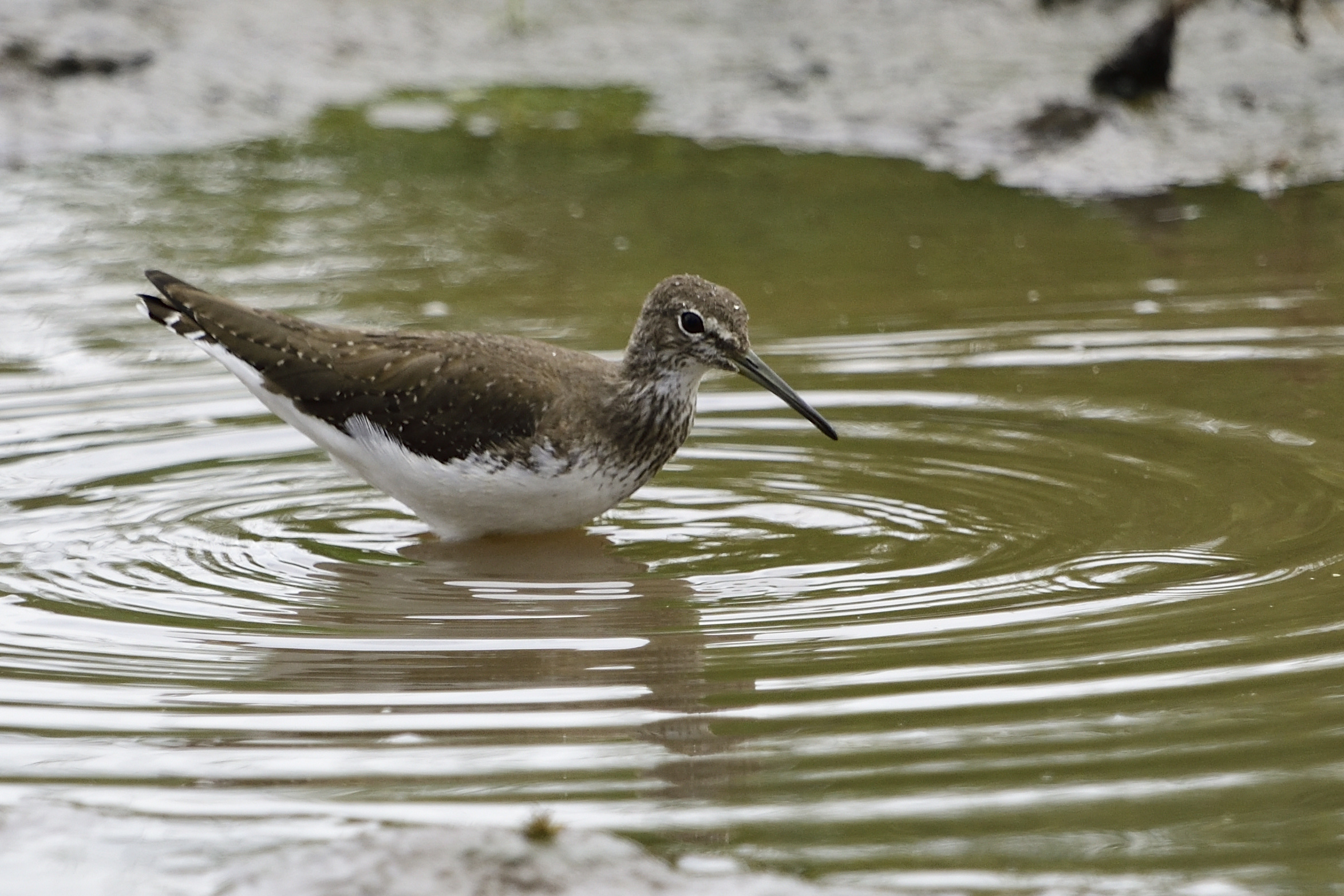
Green Sandpiper, Tringa ochropus
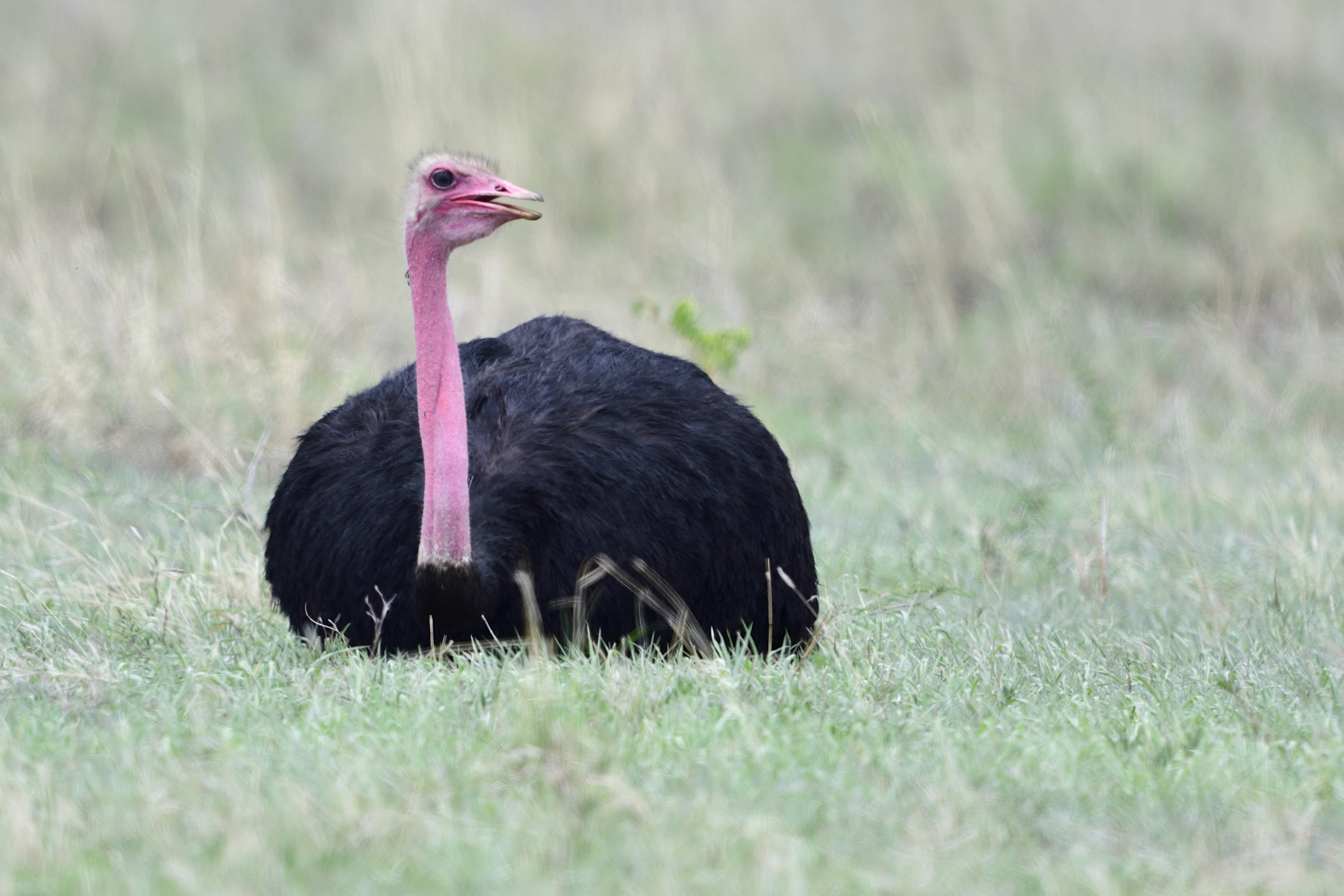
Common Ostrich, Struthio camelus
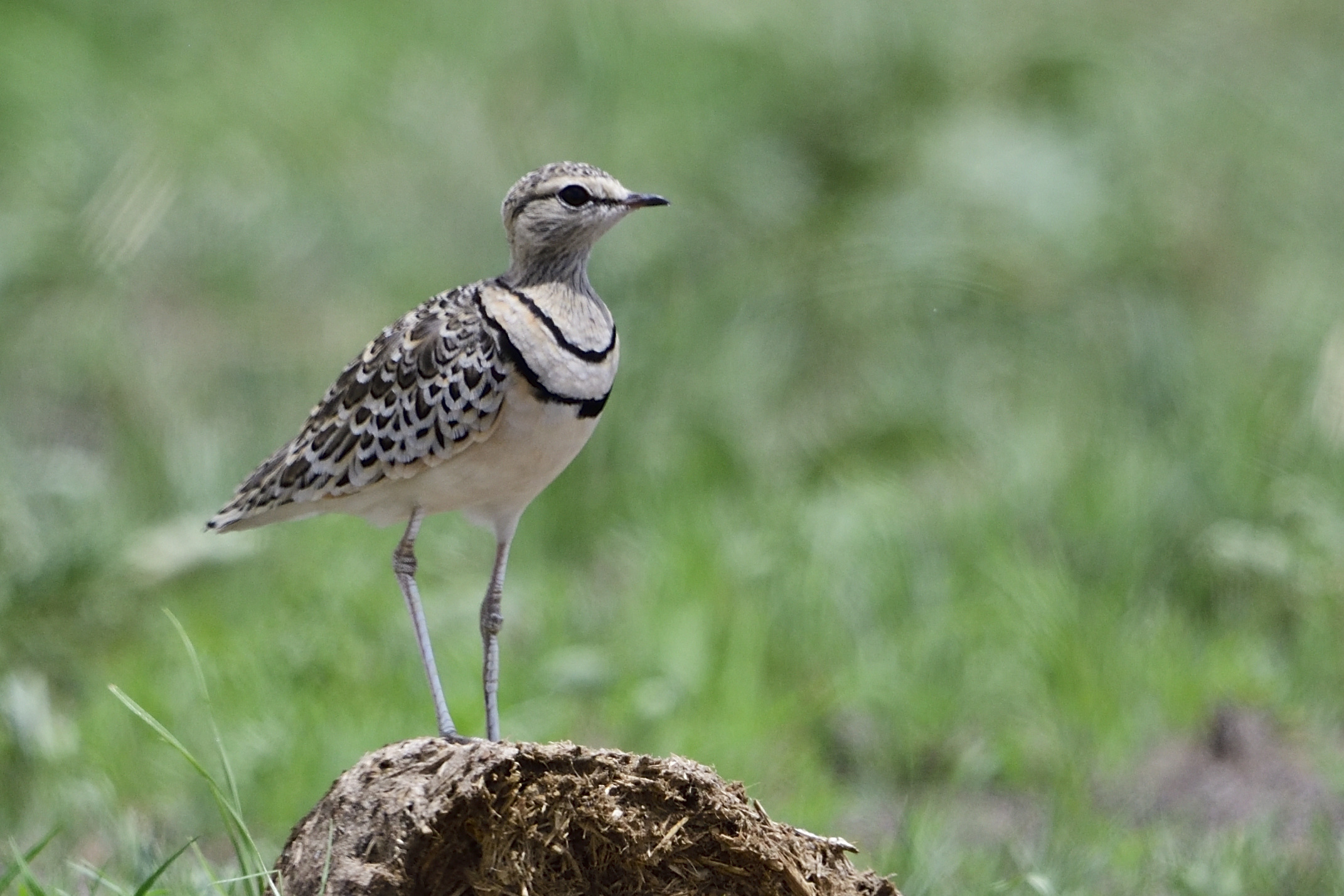
Double-banded Coursor, Rhinoptilus africanus
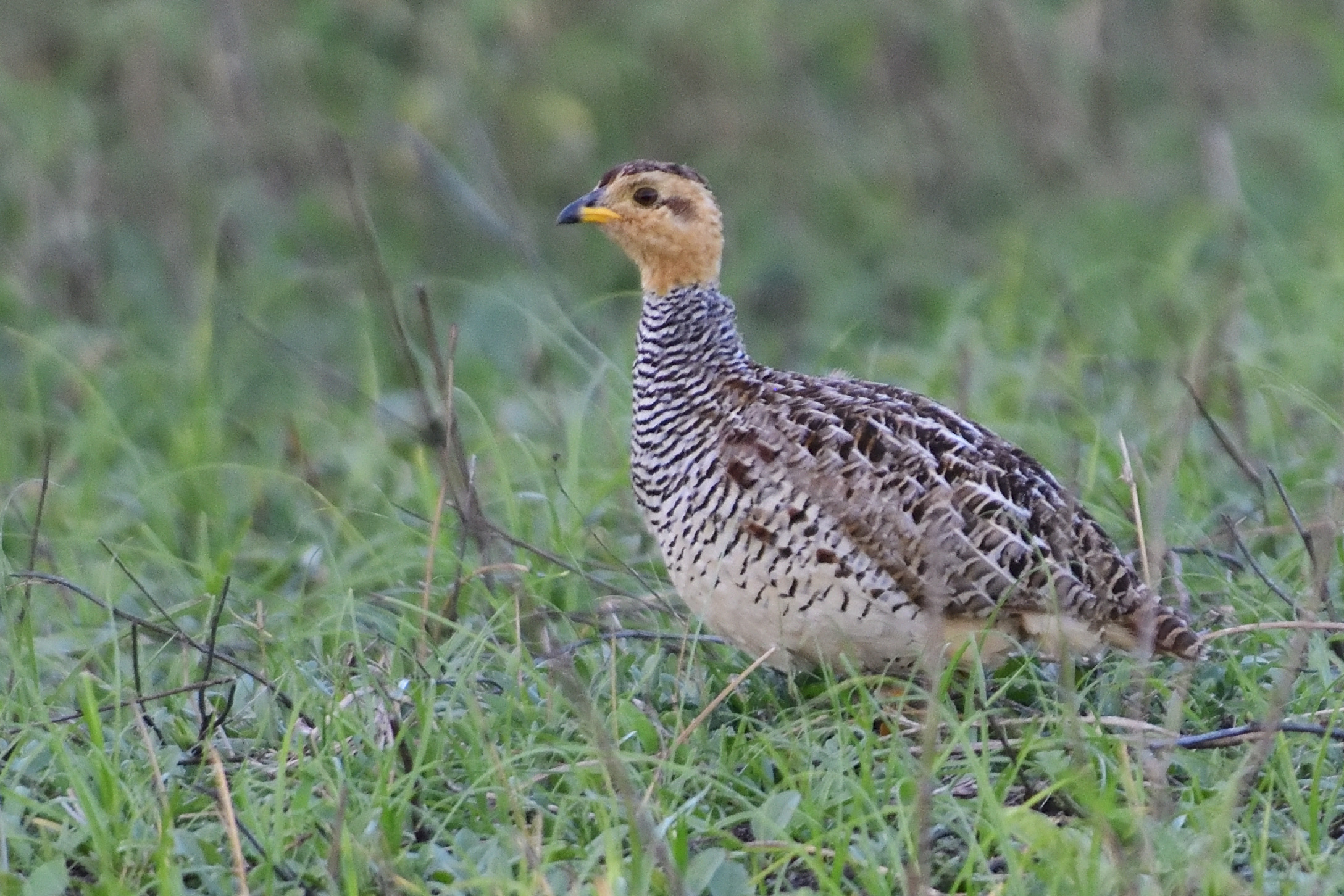
Coqui Francolin, Peliperdix coqui
Day 4, Wednesday, October 30, 2019 – Kiligolf- Lark plains – Oldonya Sambu – Lake Dulti – Kiligolf
We were up very early and headed for Lark Plains in Engikaret. It is about 1 1/2 hours drive from my house. We arrived at Engikaret at 07:00 and the Masai guides were not even there yet. Well, we started birding and ticked off Foxy Lark, Capped Wheatear, Red-capped Lark, Kori Bustard, and Chestnut- bellied Sandgrouse before we parked the car. The Masai guides were still not there, so we went to search for the Beesley´s Lark ourself. Abdul soon got us on to the Lark and soon after we got the Short-tailed and Athi Short-toed Lark as well. With all the targets from the plain in box before 08:00 we walked back to the car. Before we turned to the car, the Masai guides were approaching, I told them to walk back since we already had the birds and to meet them at Saruni´s (One of the Masai guides) Booma. We got in the car and started driving slowly towards Saruni´s Booma. The first good bird was a Ashy Cisticola, We took our time and ticked White-necked Raven, Taita Fiscal, Red-fronted Prinia (Warbler), White-bellied Canary, Rosy-patched Bushshrike, Northern Wheatear, Southern Grosbeak Canary, Temminck´s Courser, Black-winged Lapwing and Isabelline Wheatear before we parked the car at the Booma. I have a normal parking spot under a big Acacia tree that provides some shade. We were soon ready for a walk. It was always past 10:00 and getting hot, but in this dry forest, the birds seems to not mind the heat and are still surprisingly active: Red-faced Crombec, Yellow-bellied Eremomela, Grey-capped Social Weaver, Greater Kestrel, Banded Parisoma, Grey Wren-Warbler, Red-throated Tit, Cardinal Woodpecker, White-headed Mousebird (only I saw it) and Northern Crombec amongst many others were seen before we went back to the car and had a lovely lunch that Selvine had prepared for us. It was now past noon and the heat was setting in, so we took our time with our lunch. At around 13:00, we started moving again. The next stop is always Oldonyo Sambu. The best spot for Schalow´s (Abyssinian) Wheatear. We walked down and I played the tape and a female popped up. Howard made a comment about, he was not here to look for females, but I was quite confident and cocky and knew we would find a male too. We found the male + Red-fronted barbet, Lesser Honeyguide, Red-throated Tit, Long-billed Pipit, White-fronted Bee-eater, Baglafecht Weaver, Kenya Sparrow, Speckled Pigeons and many more. We returned to the car heading for the last stop for the day: Lake Duluti. The target bird there is Taveta Weaver. The bird has a breeding colony just in front of a small resort. A very nice place to sit, sip a beer and watch the weavers. Thick-billed Weavers are also mixed in + normal waterbirds. What I did not expect to see was a Hamerkop that thought it was a Fish Eagle. It dived down and snapped a fish out of the water. We returned to the car and drove back to Kiligolf. The day after was the start of the Safari, so I needed some time to pack the car. Selvine prepared a nice meal for us and we were all soon tucked in.
Some pictures from Day 4:
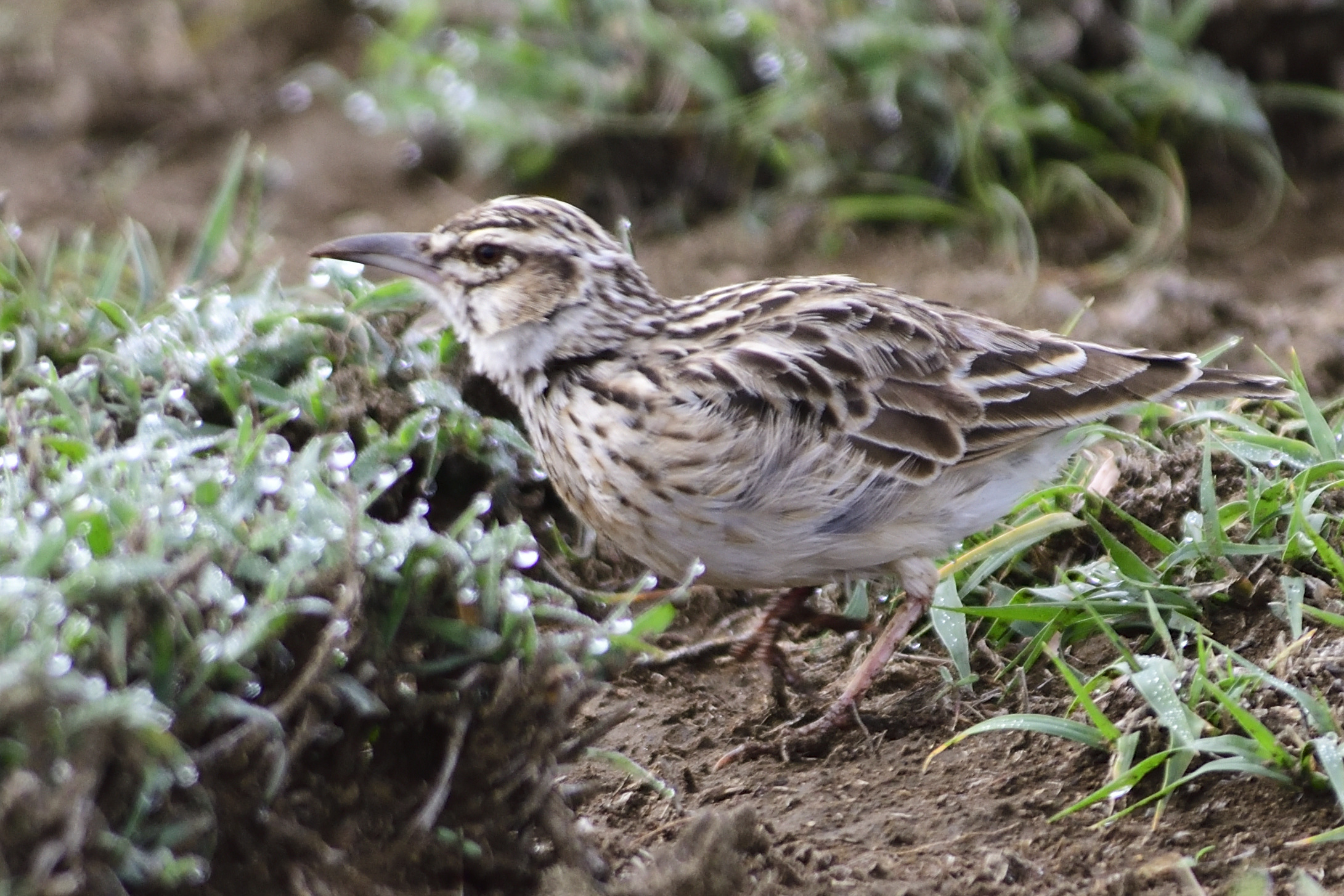
Short-tailed Lark, Pseudalaemon fremantlii – Endemic to NE Africa

Capped Wheatear, Oenanthe pileata

Another successful quest for the endemic Beesely´s Lark: Me, Howared, Abdul, Saruni and Peter

Ashy Cisticola, Cisticola cinereolus – Endemic to NE Africa
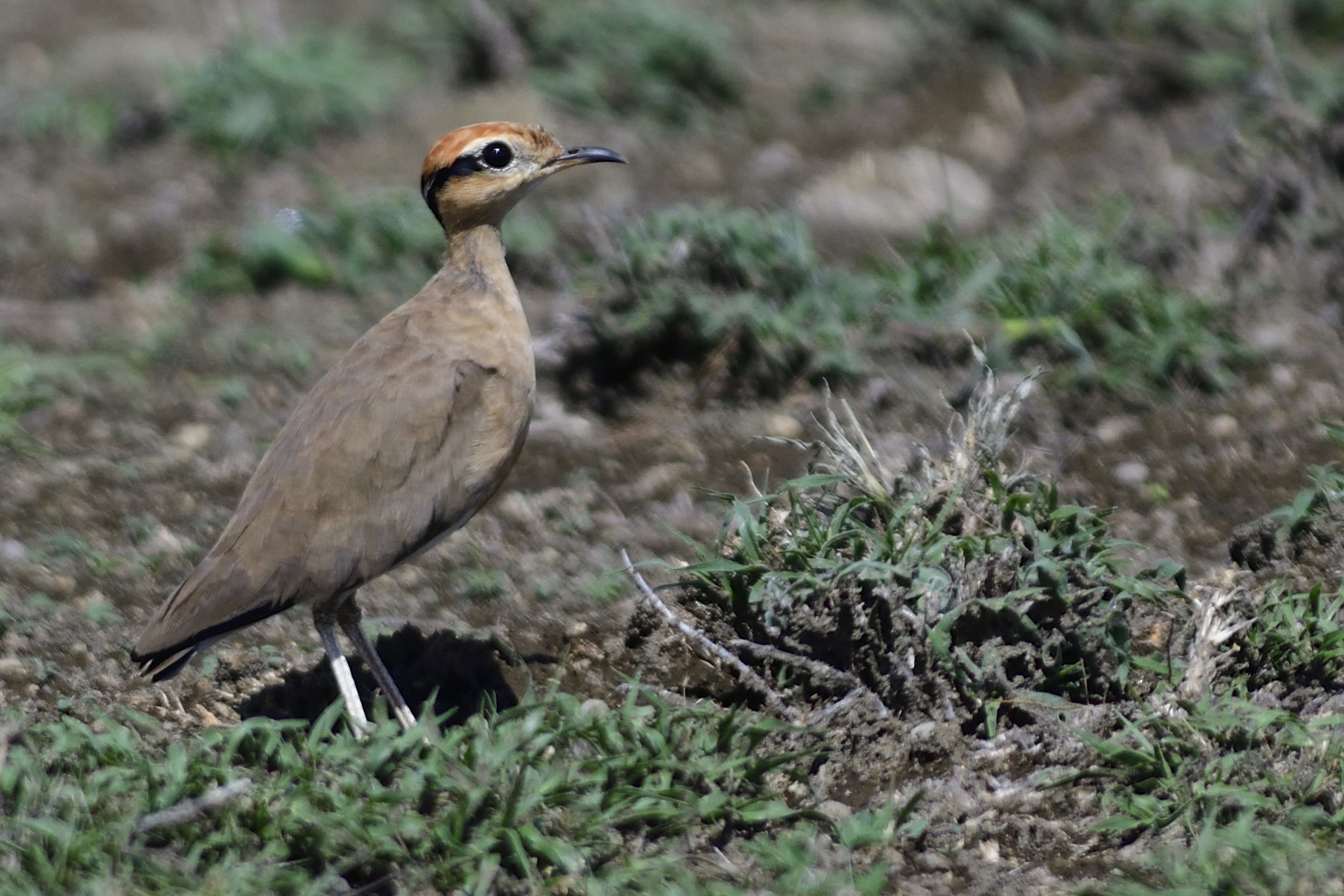
Temminck´s Courser, Cursorius temminckii

Black-winged Lapwing, Vanellus melanopterus

Yellow-bellied Eremomela, Eremomela icteropygialis

Greater Kestrel, Falco rupicolus
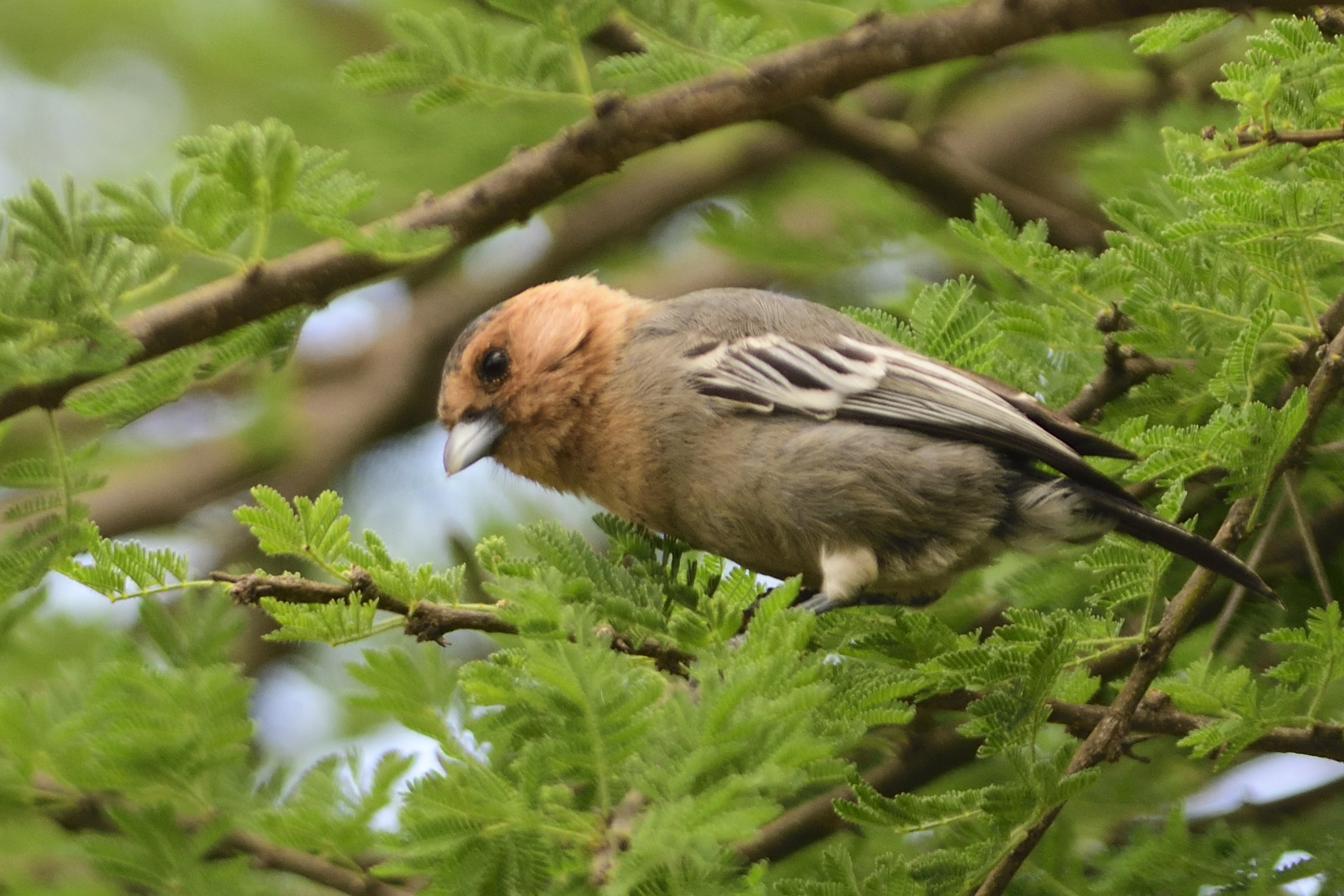
Red-throated Tit, Parus fringillinus – Endemic to S Kenya and N Tanzania

Cardinal Woodpecker, Dendropicos fuscescens

Schalow´s (Abyssinian) Wheatear (Female) Oenanthe Schalowi – Endemic to East Africa

Schalow´s (Abyssinian) Wheatear, Oenanthe Schalowi – Endemic to East Africa

Long-billed Pipit, Anthus similis

Lesser Honeyguide, Indicator minor
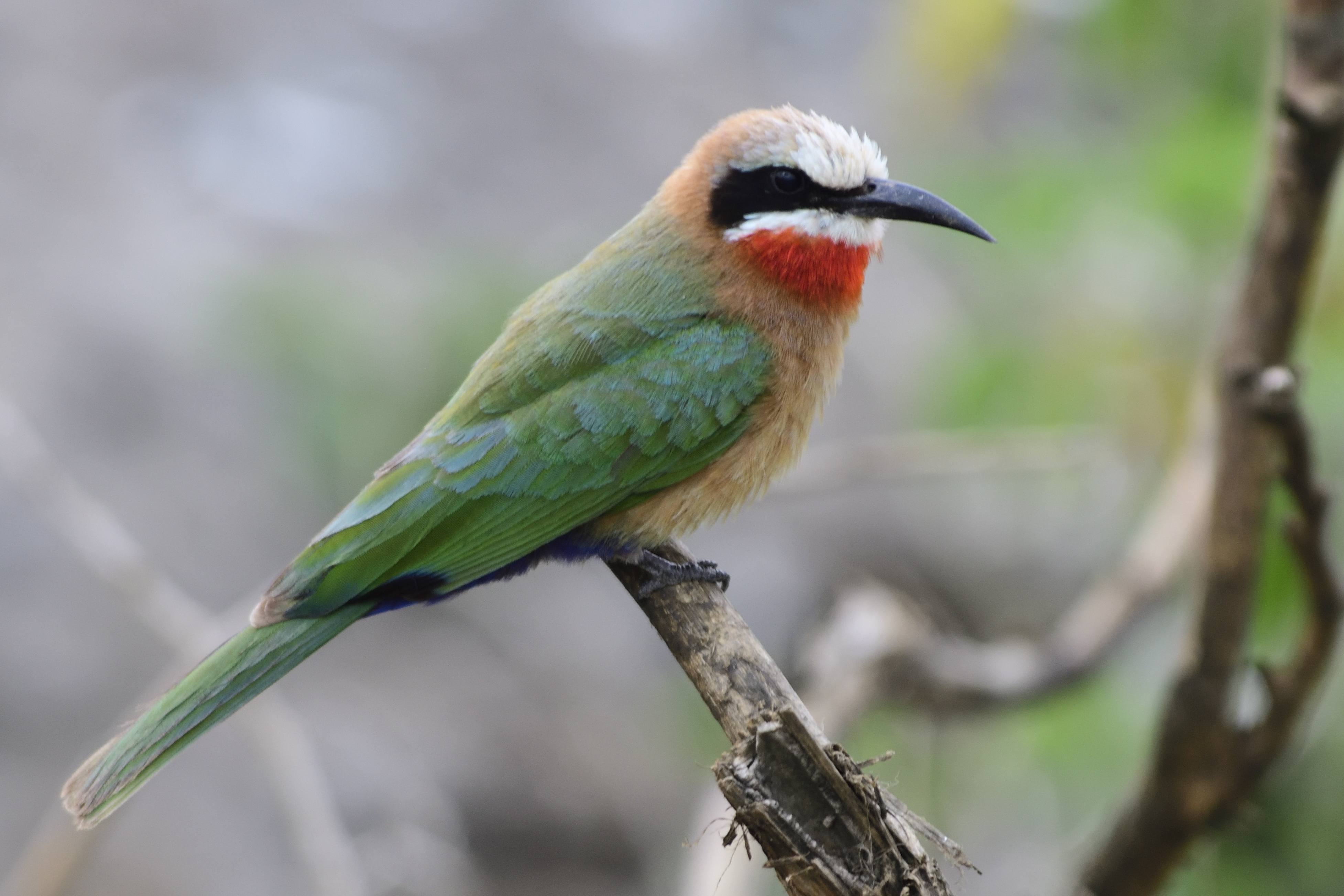
White-fronted Bee-eater, Merops bullockoides

Hamerkop, Scopus umbretta – acting like a Fish Eagle

Thick-billed Weaver, Amblyospiza albifrons

Taveta Weaver, Ploceus castaneiceps – Endemic to S Kenya and N Tanzania
Day 5, Thursday, October 31, 2019 – Kiligolf, – Nyumba Ya Mungu – near Mkomazi – Elephant Motel, Same
We set out quite early from my house and headed toward Same. We made good time and was at the junction to Nyumba Ya Mungu dam at around 09:00. Martin Joho was waiting for us there. We went to our normal birding spot on the crest overlooking the dam. We quickly started getting birds: Pink-breasted Lark, Pringle´s Puffback, Eastern Violet-backed Sunbird, Pygmy Batis, Somali Bunting, Sombre Greenbul, Tsavo Sunbird, Black-faced Waxbill, Hunter´s Sunbird, Black-throated Barbet, Red-fronted Prinia (Warbler), Pale White-eye and Green-winged Pyttilia. 1 1/2 hour of good birding. We drove to Elephant Motel, checked in and had lunch. We added Trumpeter Hornbill and Red-fronted Tinkerbird during lunch. After lunch we were going up the south Pare Mointains looking for a special endemic. We arrived at around 15:00 and quickly got into good species: Black-fronted Bushshrike, Black-headed and Bar-throated Apalis, White-starred Robin, Yellow-throated Woodland Warbler, White-tailed Crested Flycatcher, Olive Sunbird, Rüppel´s Robin-Chat, Hartlaub´s Turaco, Singing Cisticola, Red-faced Crimsonwing, Evergreen Forest Warbler, African (Dark-capped) Yellow Warbler, Red-rumped Swallow, Tambourine Dove, Moustached Tinkerbird, Stripe-faced Greenbul before we finally got a few of our main target birds: South Pare White-eye. We had only birded for 45 minutes at this point, so we continued: Shelley´s Greenbul, East Coast Boubou, Mountain Buzzard, Usambara Double-collared Sunbird, Olive Woodpecker, Pallid Honeyguide, White-eared barbet (many split this specie into White-lined Barbet, but I stick with IOC), Yellow-bellied Waxbill, Baglafect Weaver and Eurasian Blackcap. I had set departure for 17:00 in order to get back to the Motel before nightfall. The road is not good, so we needed the 1 1/2 hours. We arrived safe at the Motel, freshened up and had dinner. A long day was over and we retired early to bed.
Some pictures from Day 5:

We had beatiful views of Mt. Kilimanjaro on the way towards Moshi

Moustached Tinkerbird, Pogoniulus leucomystax

South Pare White-eye, Zosterops winifredae – Endemic to South Pare Mountains, Tanzania
Day 6, Friday November 1, 2019 – Near Mkomazi NP to Magamba Forest West Usambara.
My recording friend Peter I learnt wanted to be in the bush before the sun rose, so we left very early and was at our patch around 06:10. We did very good the day before and were running out of target birds, but still managed to see quite a number of birds: Black-bellied Sunbird, White-bellied Go-away-bird, Blue-naped Mousebird, Nubian Woodpecker, Northern White-crowned Shrike, Grey Wren-Warbler, Yellow-spotted Bush-Sparrow (Petronia), Hildebrandt´s Starling, Von der Decken´s Hornbill, Tiny Cisticola, Bare-eyed Thrush, Red-and-Yellow Barbet, Grey-headed Bushshrike, African Harrier-Hawk, Spotted Palm Thrush, Pygmy Batis, Eastern Black-headed Batis, Abyssinian Scimitarbill, Red-bellied Parrot, Yellow-rumped Tinkerbird, Hunter´s Sunbird, Black Sparrowhawk and Black Cuckooshrike. We went back to the car and drove towards the gate of the National Park. I usually see Fischer´s Starling there, but not this time, but we added Zanzibar Red-Bishop, White-winged Widowbird and Straw-tailed Whydah. It was now 08:30 and we had a long drive ahead of us to Magamba Forest. We went back to the hotel for breakfast, packed and were soon on our way. It is about 120 km to Mombo before we start the climb up to Loshoto and onwards to Magamba Forest. We stopped at the busy market in Soni for fresh vegetables and other necessities and was soon on our way again. We reached camp at around 15:30, quickly set up camp and wasted no time before we were out birding: Yellow-throated Woodland Warbler, Red-capped Forest Warbler, Usambara Double-collared Sunbird, Eastern Bronze-naped Pigeon, Stripe-faced Greenbul, Waller´s Starling, Cinnamon Bracken Warbler, White-tailed Crested Flycatcher, Green barbet, Lemon Dove, Sharpe´s Starling, Bar-tailed Trogon, Silvery-cheeked Hornbill, Fülleborn´s Boubou, Hartlaub´s Turaco, Barred Long-tailed Cuckoo, Usambara Akalat, and Oriole Finch was some of the species we recorded the first day, not too shabby? We returned to camp. Selvine cooked us a nice meal and we retired early to bed.
Some pictures from Day 6:
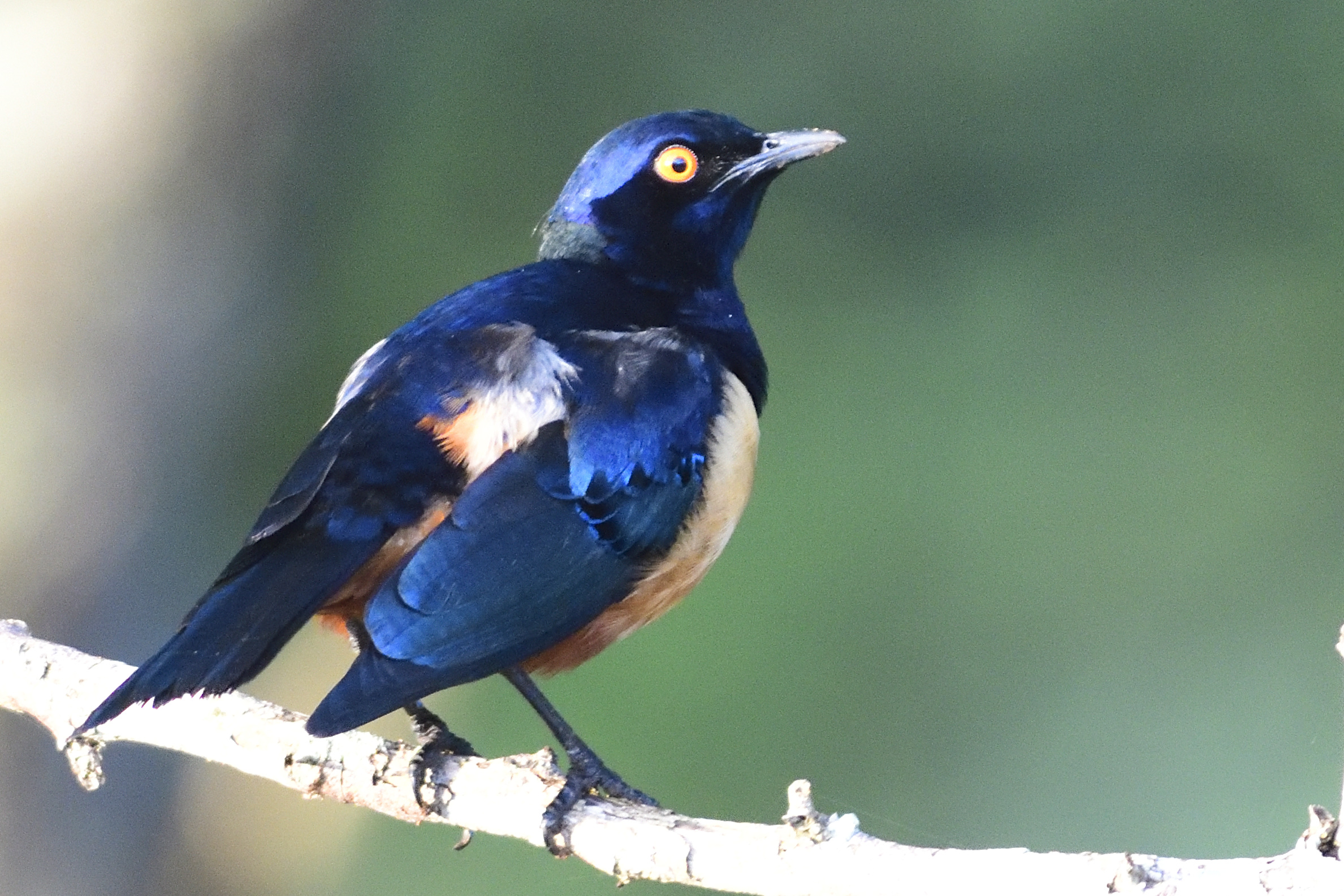
Hildebrandt´s Starling, Lamprotornis hildebrandti, Endemic to East Africa

Northern White-crowned Shrike, Eurocephalus rueppelli – Endemic to NE Africa
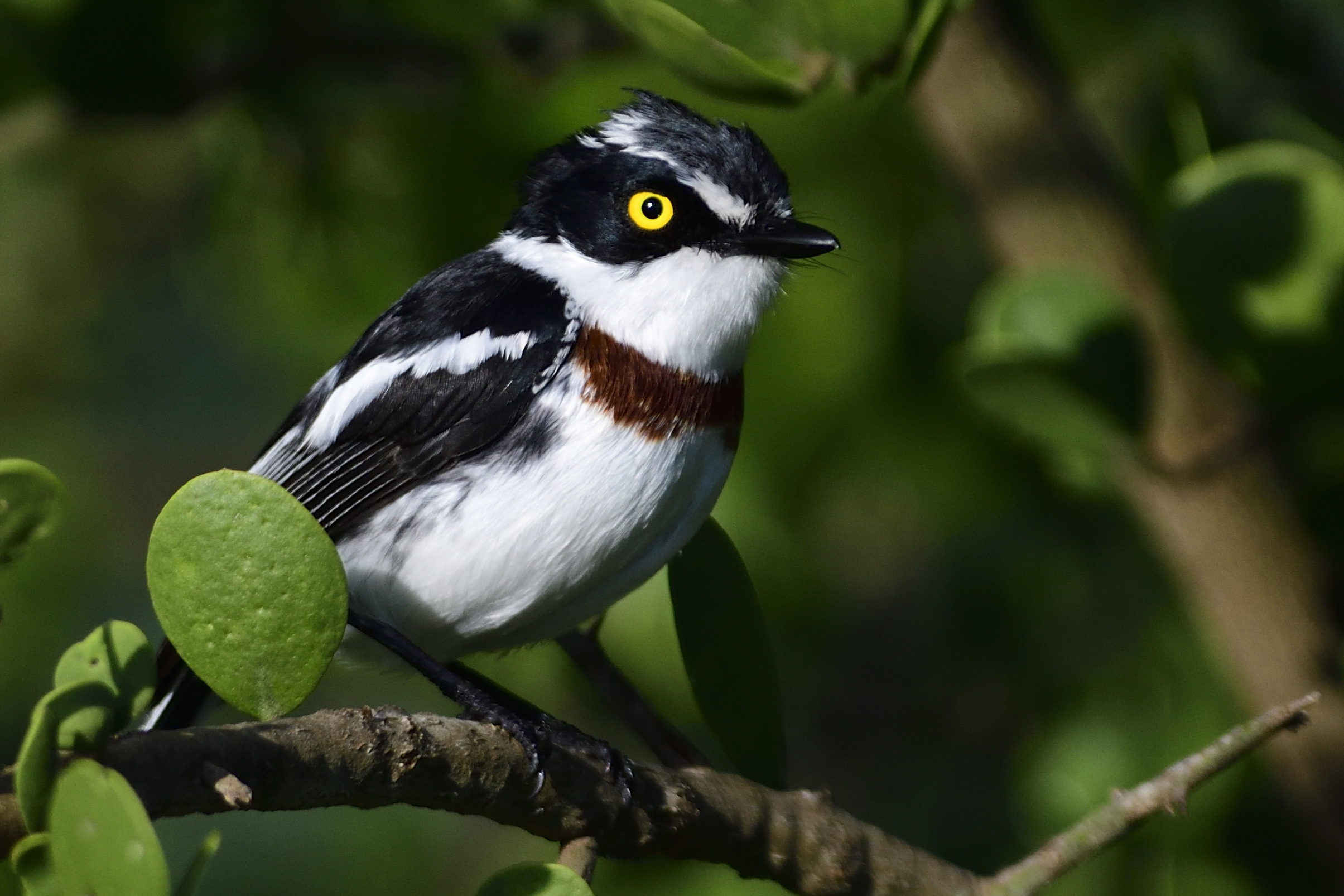
Eastern Black-headed Batis, Batis minor – Endemic to NE Africa

Camp in Magamba Forest, West Usambara, Martin, Howard, Selvine and Peter
Day 7, Saturday, November 2, 2019 – Magamba Forest, West Usambara.
A full day in Magamba Forest. Again, we had done extremely good the day before, with another good day, I considered staying only 2 nights instead of the scheduled 3. Peter, Martin and Howard left camp around 05:00. I decided to stay a little longer in the comfort of my tent :-). I was up and about around 06:00, met up with the others and the birds were willing: Forest Batis, Spot-throat, African Hill Babbler, we actually managed to see a Evergreen Forest Warbler, African Hill Babbler Howard´s world bird number 6.000!), White-chested Alethe. We had now managed to walk quite far from camp and came to a site that looked good. Martin and I looked at each other and nodded. We were thinking the same thing, perfect place for Usambara Weaver. I played the call and a pair flew in. Distant, but good views. I even believe Peter managed to record them. We started walking back to camp and picked up another special, Usambara Thrush, then Black-fronted Bushshrike, Dark-backed Weaver and Grey Cuckooshrike were picked up before we reachedc camp. We were in camp by 09:00 and Selvine dished up a great breakfast for us. After breakfast, the boys wanted to go out again. I was a little reluctant, but went with them. As I suspected very few birds were active. I did pick up a single male Red-billed Quelea in full breeding plumage though. Not a bird I would expect to find in a forest more than 2.000 meters above sea level. We went back to camp to see the worst heat out. at 15:30, we headed out again. Red-chested Cuckoo, Mountain Buzzard, African Olive Pigeon, Usambara Thrush, Black-headed Mountain Greenbul, Tambourine Dove, Yellow-streaked Greenbul, African Duck! and Usambara Akalat. We were back in camp. Selvine again impressed with her cooking skills. During dinner I told Howard and Peter the lay of the land: We had hit all the target birds in Magamba except for one: Montane Tiny (Usambara) Greenbul. I suggested that we moved on to fresh pastures the day after and they both agreed. We still had the morning birding the day after to attend to though. We had an African Wood-Owl in camp that night
Not too many pictures from this day. With a bird recorder, silence is of outermost importance. The shutter on my Nikon D850 makes a lot of noice. First priority on this trip was for Peter to get his recordings. Howard very wisely had a camera where the shutter made no sound, so he could fire at will:

Thumbs up in Magamba Forest for African Hill Babbler, Howard´s world bird number 6.000!

Bar-tailed Trogon, Apoloderma vittatum
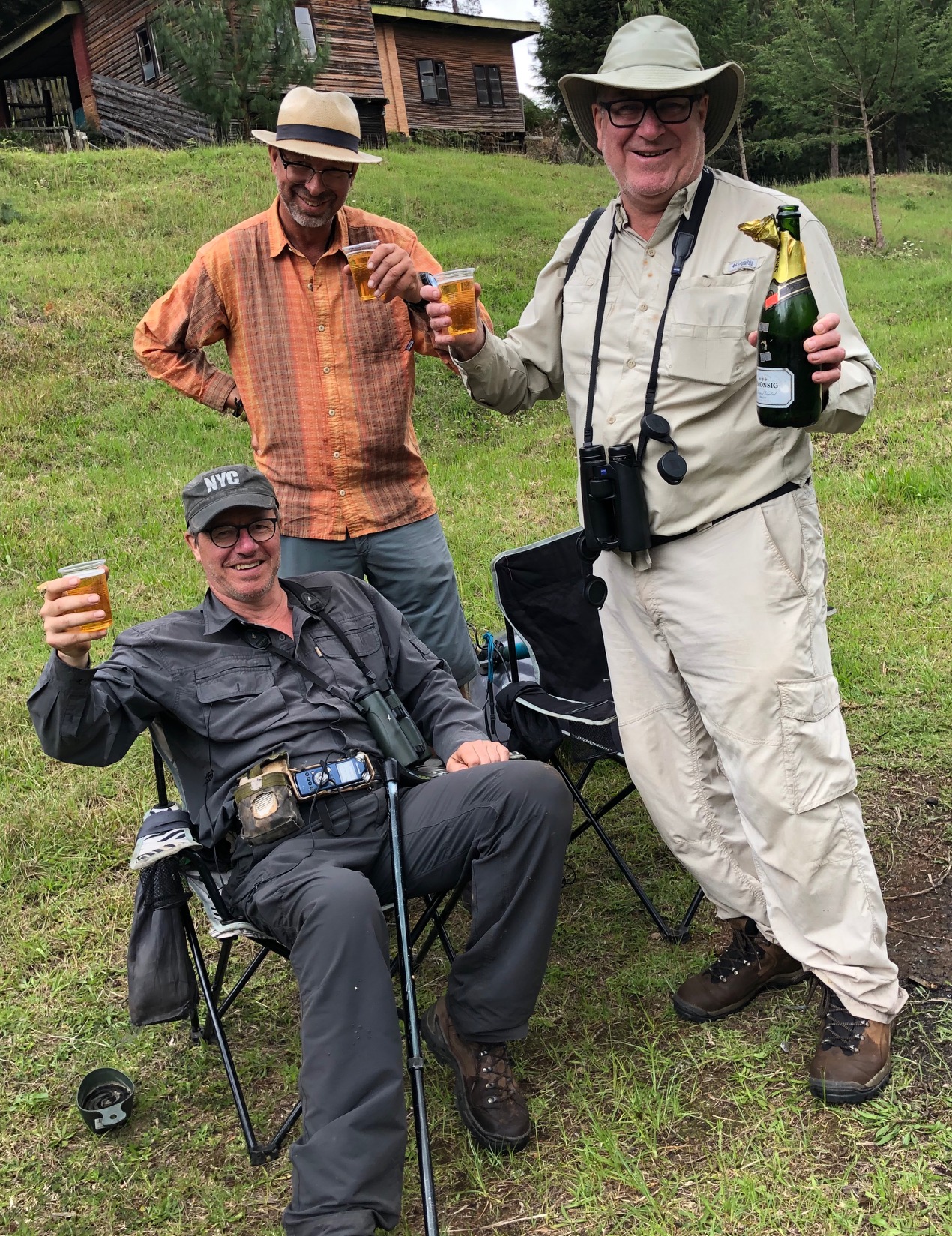
A bottle of bubbly was required to celebrate Howard´s milestone: 6.000 World Wide Bird
Day 8, Sunday, November 3, 2019 – Magamba Forest, West Usambara via Muheza to Amani Forest, East Usambara.
The boys went out around 5 this morning. I slept in and started packing camp. They were back at 09:45 and had actually found the Mountain Tiny Greenbul. In addition: Red-faced Crimsonwing and Placid Greenbul. Fantastic, we cleaned up Magamba Forest. Selvine made breakfast while we were packing camp and we were soon on our way. the descent down to Mombo went fine. Then the main road to Segera before we turned left on to the Tanga road. We made a pit stop in Muheza to stock up on necessary supplies and then continued to a spot just north of Muheza. We had a couple of target birds here: Coastal Cisticola and Green Tinkerbird which we found quite easily and also Eastern Golden Weaver as a bonus bird. We were soon on our way and stopped at the lower forest patch before the gate to Amani. This is a different habitat than higher up. We immediately got into birds: Square-tailed Drongo, Green Barbet, Collared Sunbird, Red-capped Robin-Chat, Little Greenbul, Uluguru Violet-backed Sunbird, Chestnut-fronted Helmetshrike, Dark-backed Weaver, Black-and-white Shrike-Flycatcher, Green-headed Oriole, Little Yellow Flycatcher, Black Sparrowhawk, Lowland Tiny Greenbul and Fischer´s Greenbul. The birding was extremely good, but we still had a long way to go. It was already 17:45, so we had to continue in order to reach camp before dark. We arrived just in time and Robert were there to greet us. We checked in freshened up and got ready for dinner. Another good day of birding.
Some pictures from Day 8:

Coastal Cisticola, Cisticola haermatocephala – Endemic to coastal East Africa

Green Tinkerbird, Pogoniulus simplex – Endemic to SE Africa

Black Sparrowhawk, Accipiter melanoleucus
Day 9, Monday, November 4, 2019 – Amani Forest
The boys still insisted on an early departure, so we were in the car by 05:30. We had 2 prime targets this day: Long-billed Forest Warbler and Kretchmer´s Longbill. To reach the site we had to drive about 45 minutes on a very bad road from Camp. We usually walk through some planted forest to get to the site, but due to the fact that Peter was missing a leg, I decided to try to drive up to the spot. In order to do that, I needed to cross a rickety bridge, that went fine and and at 06:15 we were at the spot. A Pale-breasted Illadopsis was calling close by the car, but did not show well. It is a short walk down to the spot for the Long-billed Forest Warbler and the bird willingly came out. Now, the Kretchmer´s Longbill turned out to be a harder bird to locate. It was only 06:35 in the morning and Martin and I made a joke that it was too early for that bird :-). The birding was actually quite slow, but we got East Coast Boubou, Tambourine Dove, Trumpeter Hornbill and Little Greenbul while searching for the Longbill. We had now used 45 minutes to look for it without success. We looked at all the normal places, but not a call to be heard. We kept on searching and after another hour around 08:10, the first birds started singing. Both my guests got very nice views of the Krethcmer´s Longbill and Martin and I did agree that 06.15 was too early for the bird :-). Now we heard several birds singing. We had found our two targets and got back in the car to go for the next targets. A brown-hooded Kingfisher perched nicely for us. We drove to the next spot to look for the Sharpe´s Akalat. Here as well I drove to a point up in the forest, were I turned the car. We had brief views of the Akalat where we parked the car, but after about one hour search, could not locate it again despite Martin and the boys did some serious bush bashing. Other birds at the site included Forest Batis, Yellow-streaked Greenbul, Square-tailed Drongo, Shelley´s Greenbul, Orange Ground Thrush (heard only) and Black-headed Apalis. We gave up searching more for the Akalat and started driving towards camp. Howard needed Half-collared Kingfisher and we have a site for that bird although we rarely see it there. This day was however our lucky day. The bird was perched right next to the road. With another target in the box, we returned to camp. It was now passed 11:00 and the time of day that I usually relax a little during the hottest time of the day. Peter and Howard wanted to continue birding and our normal loop is quite long, so we started: Purple-banded Sunbird, Banded Green Sunbird, Black-bellied Starling, Scaly-throated Honeyguide, Pale Batis, Fischer´s Turaco, African Green Pigeon and a few more common ones were recorded, but all in all very slow as expected. We were back in camp at around 14:00. We had lunch and then relaxed a little before we went out again at 17:00. We were going to the same area as in the heat of the day, but I told Martin we needed to take a shorter loop: African Green Pigeon, Mosque Swallow, Palm-nut Vulture a soaring Ayre´s Hawk-Eagle and Trumpeter Hornbill were some of the birds we saw. Another rather slow walk. We were back in camp by 18:00 and sat down to see if we had the luck to get an Olive Ibis or two to fly by, but no such luck. We had dinner and retired early to bed.
Some pictures from Day 9:
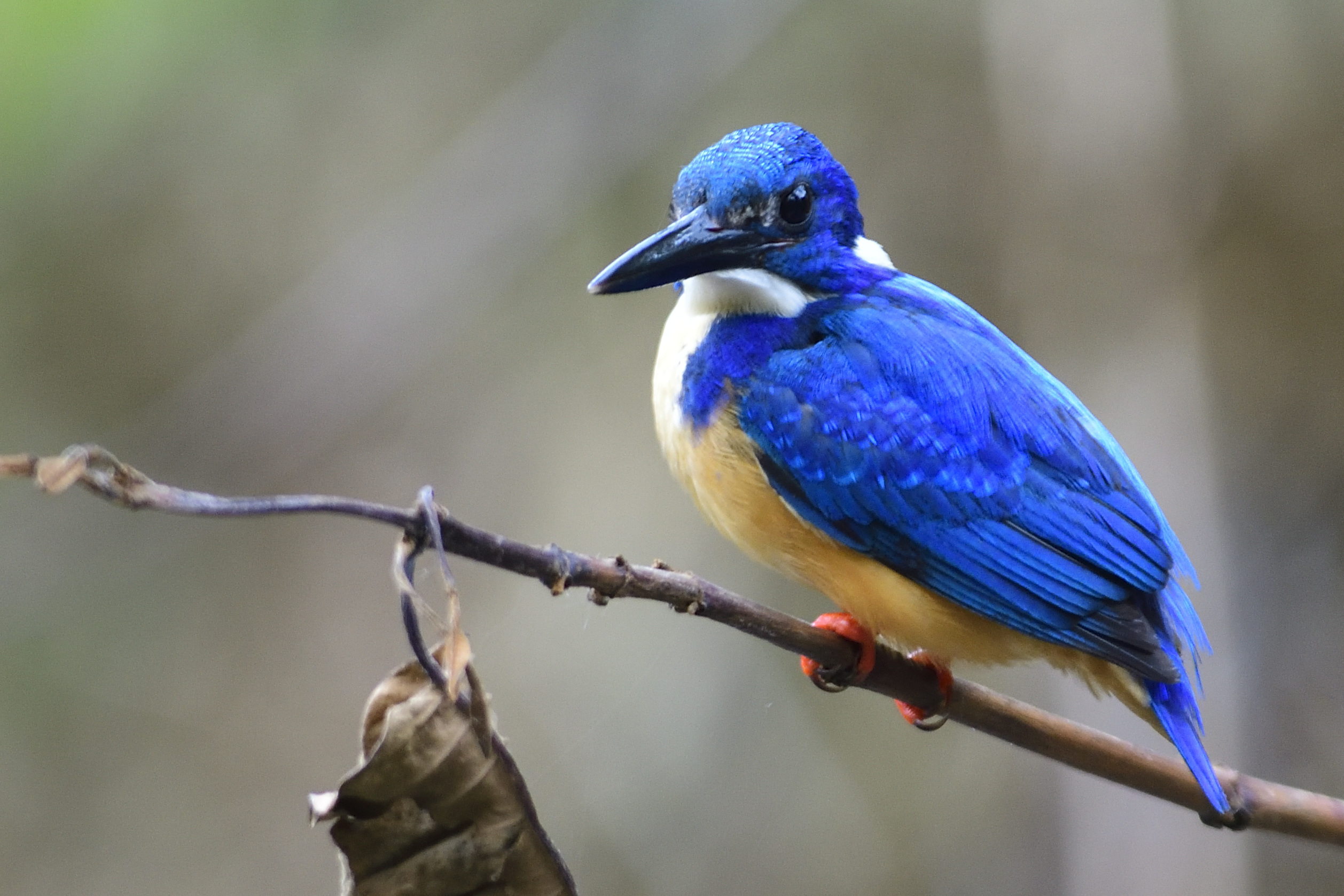
Half-collared Kingfisher, Alcedo semitorquata

Mosque Swallow, Cercropis senegalensis
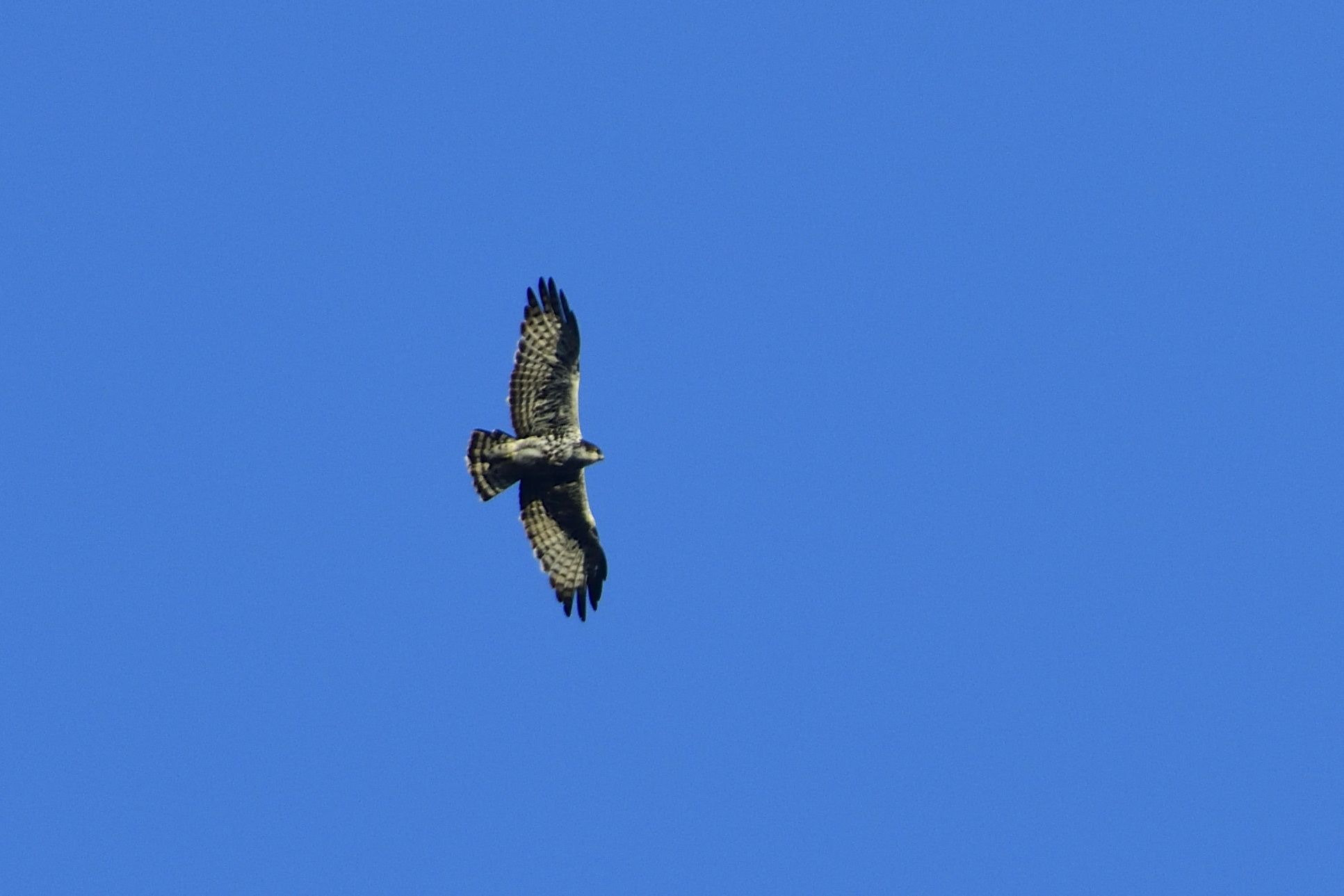
Ayre´s Hawk- Eagle, Hieraaetus ayresii
Day 10, Tuesday, November 5, 2019 – Amani Forest
We had an early start, but the weather was not nice to us, we had a real rainstorm. The only new bird in the morning was a Long-crested Eagle. We managed to get back to camp, had breakfast and waited out the rain. A Mountain Wagtail kept us with company. We had looked for the Cabanis´s Bunting at the usual places, but could not locate it. Martin knew another spot and as soon as the rain stopped, we got in the car and drove up to the spot. Sure enough, there it was a Cabanis´s Bunting. A little later, we had an overflying Wahlberg´s Eagle. We drove back to camp, but stopped just short. Martin had heard a Red-tailed Ant-Thrush and with some psssting, he expertly managed to lure it out. It provided great views. In camp we had overflying Mottled Spinetails. Quite a slow day, but at we least we managed a few targets
Some pictures from Day 10:
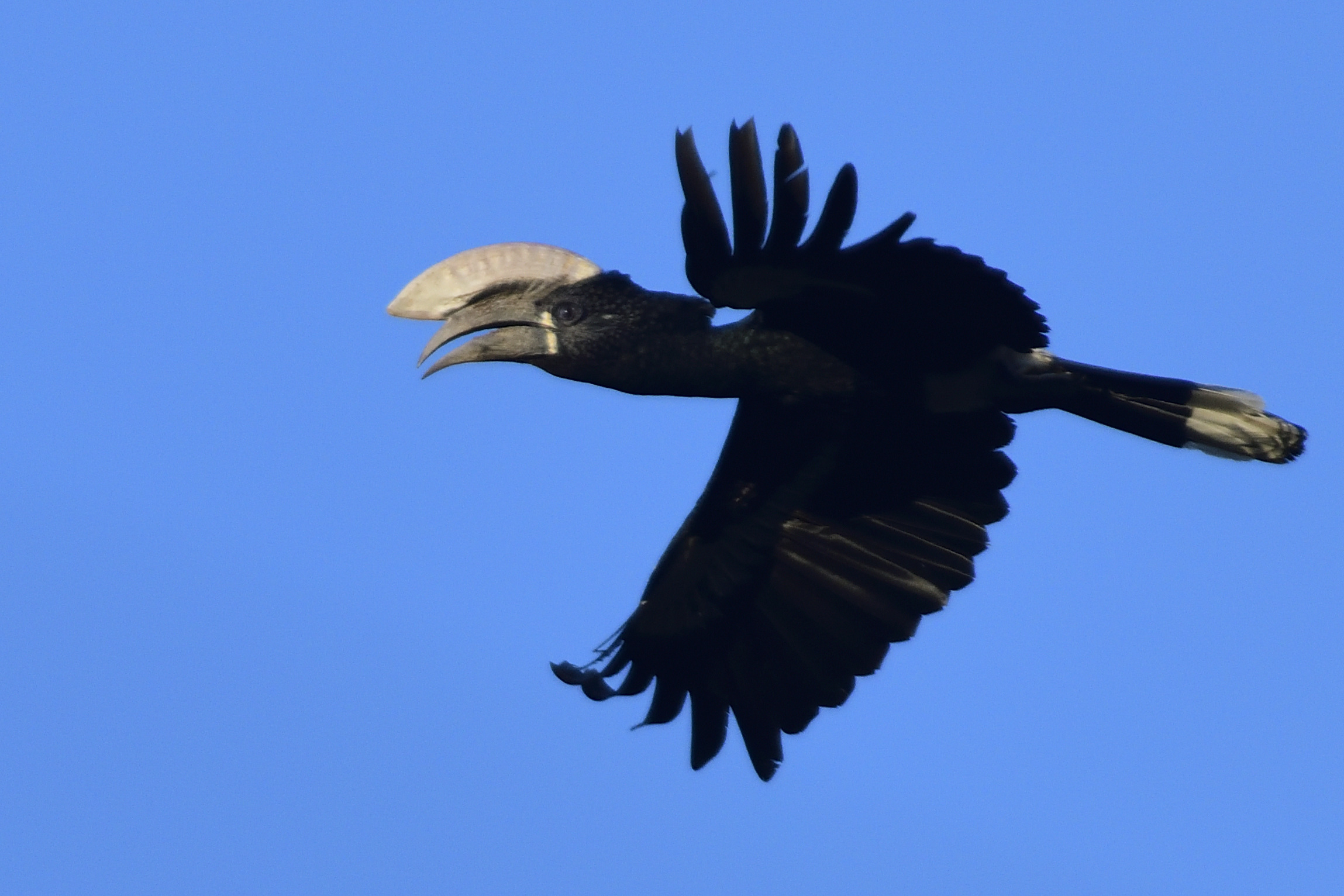
Silvery-cheeked Hornbill, Bycanistes brevis
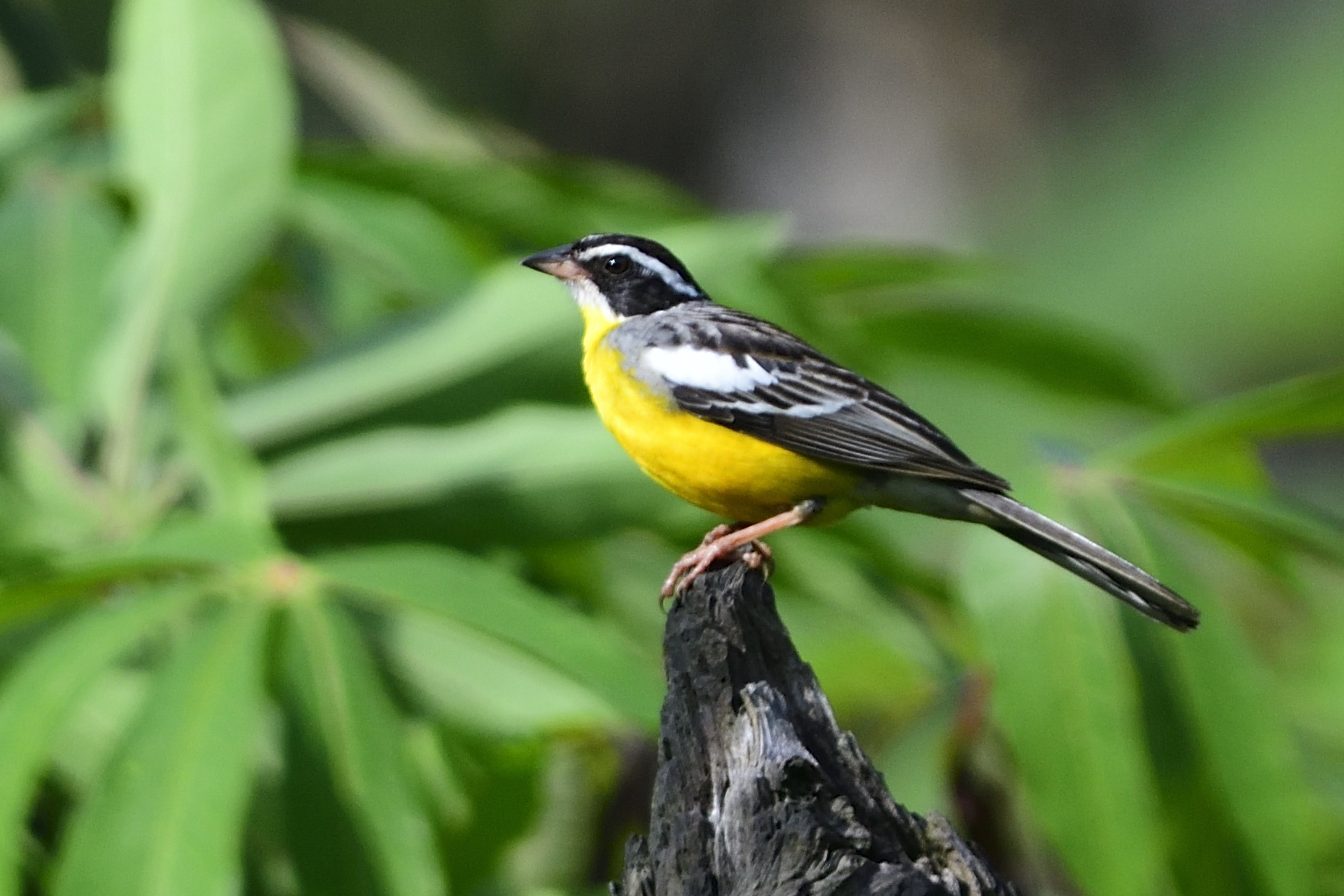
Cabanis´s Bunting, Emberiza cabanisi
Day 11, Wednesday, November 6, 2019 – Amani Forest via Mkomazi to Elephant Lodge, Same
Our last morning in Amani Forest. We decided to bird the lower stretches this morning. I now knew that Peter wanted to get away early, so I was ready early and packed the car. I then had to gently wake Selvine, since she is certainly not a morning person. We left 05:45 and was at our birding spot around 06:25. We had racked up quite a few species on the first day, but still lacked a few: Kenrick´s Starling, Green-headed Oriole, Usambara Hyliota, Green-backed Woodpecker, Red-tailed Ant-Thrush, Pale-breasted Illadopsis, Plain-backed Sunbird, Little Yellow Flycatcher, Estern Nicator, and Blue-mantled Crested Flycatcher were some of the species we saw. We went back to the car and headed for Muheza. I took Peter and Howard to a local restaurant for primarily coffe, since I had deprived them off their coffee that morning. We also had a local breakfast. I am not sure my guests were too impressed. We left Martin in Muheza and started the long drive back to Same and Elephant hotel. We did good on time and reached the hotel in good time for lunch. I insisted that we waited a little to go birding since it was still hot. We left at 4 and decided to go straight towards the gate of the Mkomazi NP: White-winged Widowbird, Zanzibar Red Bishop, Fire-fronted Bishop, Straw-tailed Whydah, Nubian Woodpecker, Spotted Flycatcher, and Lesser Masked Weaver were found on the road. We drove to our regular birding spot just outside the park and added Vitelline Masked Weaver, Black-headed Oriole, Black-throated Barbet, Hunter´s Sunbird and D`Arnaud´s Barbet. We returned to the hotel freshened up and had dinner.
Day 12, Thursday, November 7, 2019 – Same via Nyumbu Ya Mungu Dam to Kiligolf.
Again and early morning and today again we were doing some catching up. We decided to go back towards Nyumba Ya Mungu Dam and look for a certain Scaly Chatterer that we dipped on on the way south. We were at the site at 06:30 and got the Scaly Chatterer as the first bird. Other birds included Rufous Chatterer, Southern Grosbeak Canary. Red-fronted Prinia (Warbler), Bare-eyed Thrush, Spotted Palm Thrush, Slate-colured Boubou, Greater Honeyguide, Northern Brownbul, Black-throated Barbet, Eastern Violet-backed Sunbird, Crested Francolin, Purple Grenadier, Chestnut Weaver and Grey Wren-Warbler. Peter and Howard wanted to go to the dam itself, to get some more species for their trip list and since we had plenty of time, I saw no reason to not go. We added quite a few trip species, but nothing of real interest. We got in the car and drove back to Kiligolf. We relaxed and had a lovely dinner, then bed.
Day 13, Friday, November 8, 2019 – Kiligold, Arusha NP – Kiligolf
Again an early morning. We were again at the park before opening time. We picked up some species at the gate: Bronzy Sunbird, Singing Cisticola, Grey Crowned Crane, Red-billed Oxpecker, Trilling Cisticola, Little Rush Warbler and Yellow Bishop. Once inside the park, we drove towards the Museum and added Rüppel´s Robin-Chat, Narina Trogon + a few more. We stopped at the museum and had Kenrick´s Starling. On the way up to the crater rim and on the rim: Eastern Bronze-naped Pigeon, Hartlaub´s Turaco, Broad-ringed White-eye, Little Greenbul, Scaly Francolin, Cinnamon-chested Bee-eater, Silvery-cheeked Hornbill, White-starred Robin, White-eared Barbet, Brown Woodland Warbler, Mountain Buzzard, Grey-headed Nigrita, African Hill Babbler, African Emerald Cuckoo, Cinnamon Bracken Warbler, Evergreen Forest Warbler, Stripe-faced Greenbul, Bar-throated Apalis and Crowned Hornbill. We stopped at a small wetland on the way to the Momella lakes and added Taveta Weaver, further on Green Malkoha. Then: Northern Fiscal, Augur Buzzard and Southern Citril. We had lunch at the picnic stop. Around the lakes: Southern Pochard, Black-necked Grebe, Brown-throated Martin. Lesser and Greater Flamingo, Winding Cisticola, Whinchat + the normal water birds including Green Sandpiper. We left the lake and headed for Mount Meru. Black-chested Snake Eagle, Abyssinian Crimsonwing and a low soaring Crowned Eagle provided fantastic views.We stopped at the waterfall, but did not add anything there. We drove to the top and had Balck-headed Mountain Greenbul, Yellow-bellied Waxbill, Eastern Double-collared Sunbird, Waller´s Starling, Moustached Tinkerbird, Broad-ringed White-eye and Brown Woodland Warbler. On the decent Black-throated Wattle-eye. It was getting late, so we had to head for the gate. We did not pick up anything more of interest on the way to the gate which we reached 5 minutes before closing time at 18:25. We headed back to Kiligolf and Selvine dished up a nice meal for us.
Some pictures from Day 13:

Broad-ringed White-eye, Zosterops eurycricotus – Endemic to Tanzania

Whinchat, Saxicola rubetra

Augur Buzzard, Buteo augur
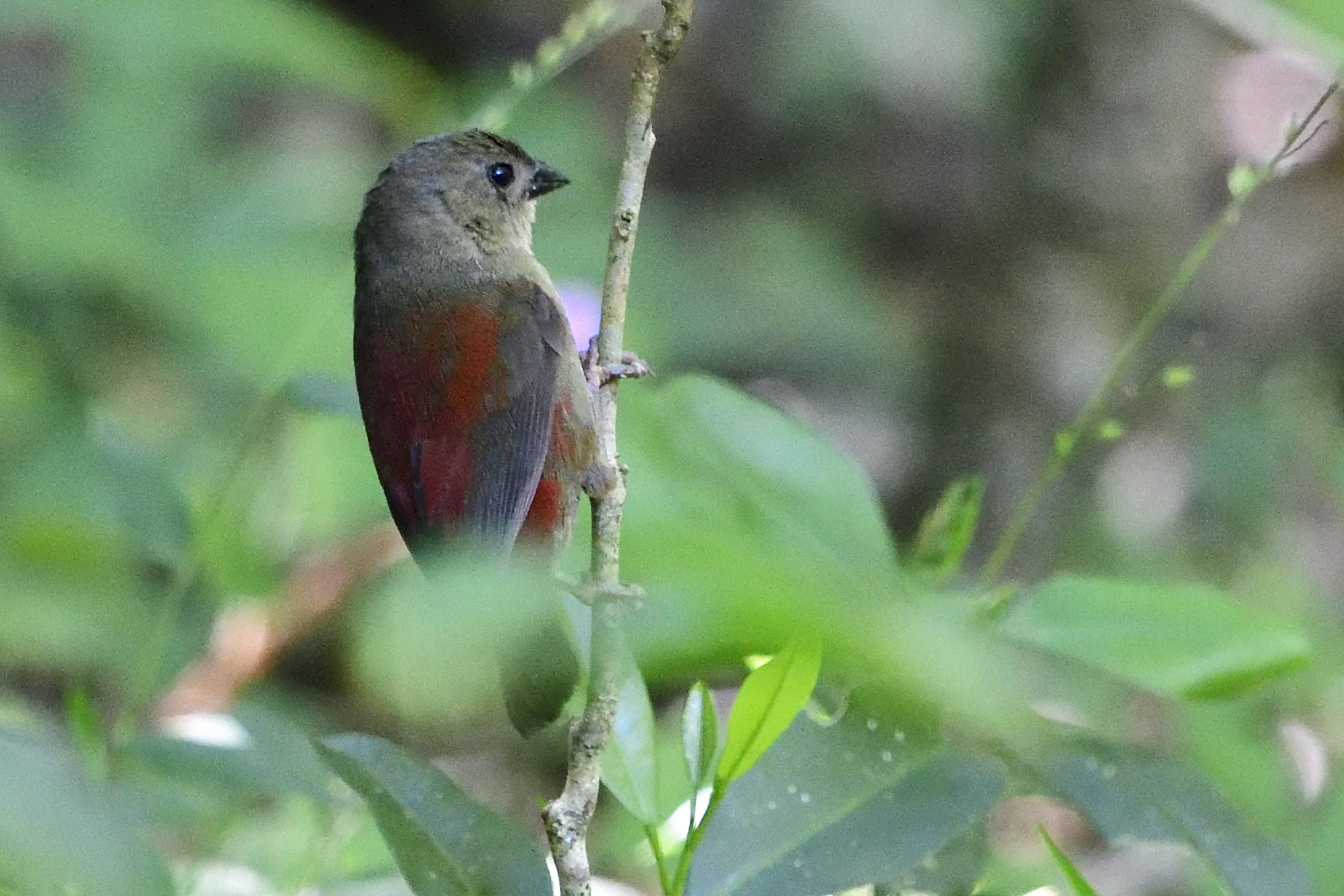
Abyssinian Crimsonwing, Cryptospiza salvadorii – Endemic to NE Africa

African Dusky Flycatcher, Mucicapa adusta
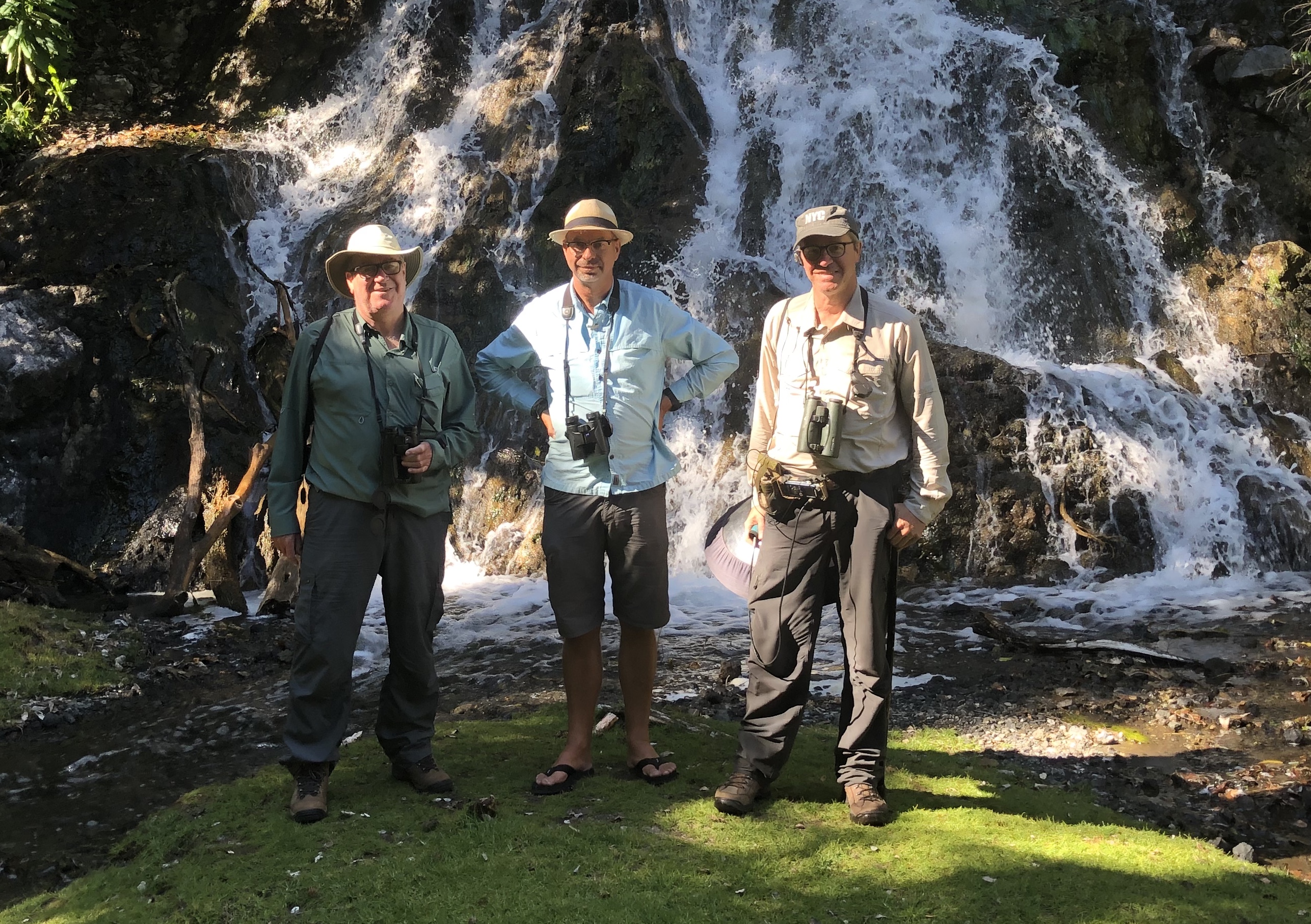
Howard, me and Peter at the waterfall up Mount Meru

Brown Woodland Warbler, Phylloscopus umbrovirens – E ndemic to NE Africa
Day 14, Saturday, November 9, 2019 – Kilgolf – Nanja – Kiligolf- Kilimanjaro Airport.
This was Peter and Howard´s last day, we did not have any special plans for the day, but the guys wanted to go back to the wetlands at Nanja to see if they could add some more species to the Tanzanian list. We were not up that early this morning: African Swamphen, Northern Showeler (I did not see this, would have been an EA Lifer for me), Montagu´s Harrier, Red-billed Teal, Lesser Swamp Warbler, Temminck´s Stint (EA Lifer for me, only record shots), Black Crake, Lanner Falcon, Gabar Goshawk, White-backed Vulture and African Pygmy Kingfisher were added to the list the last day. We returned to Kiligolf, had a nice lunch. The boys relaxed and caught up with their e-mails, freshened up and were soon on the way to the airport.
A picture from Day 14:
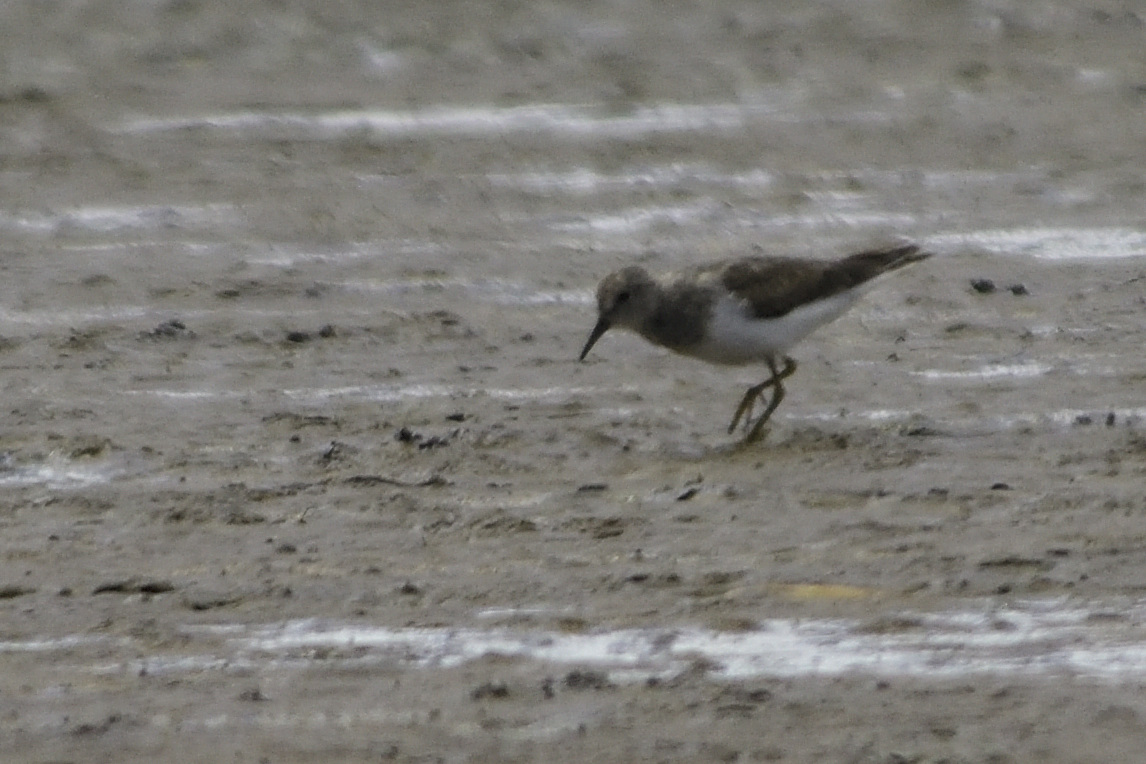
Temminck´s Stint, Calidris temmickii – Only seen this bird in Norway, so an East African Lifer for me.
It was a different experience having a bird recorder for the first time. I believe both Howard and Peter were happy with their trip. Howard had a target list of 42 birds and got 46 lifers (quite a few recent splits involved). He also managed to see his 6.000th world wide bird on the trip. I believe Peter had about 62 lifers. Both of them had been to East Africa before. I believe we recorded 424 species on this trip which is a record for my Usambara trip. Peter has provided the following information about his recordings:
His recordings can be found on xeno-canto. With a query to select his recordings from Tanzania:
Taxonomic sequence: https://www.xeno-canto.org/explore?query=rec%3Aboesman%20cnt%3ATanzania
Chronological sequence: https://www.xeno-canto.org/explore?order=dt&dir=0&query=rec%3Aboesman+cnt%3ATanzania
If you are planning to go somewhere on my Usambara trip, these recordings are of great value. With Peter´s recordings, we managed to call out even the most difficult species. Stay tuned for the next trip report where I had my first 2 fellow Norwegians as my guests and we did the Usambara trip again with a little twist.